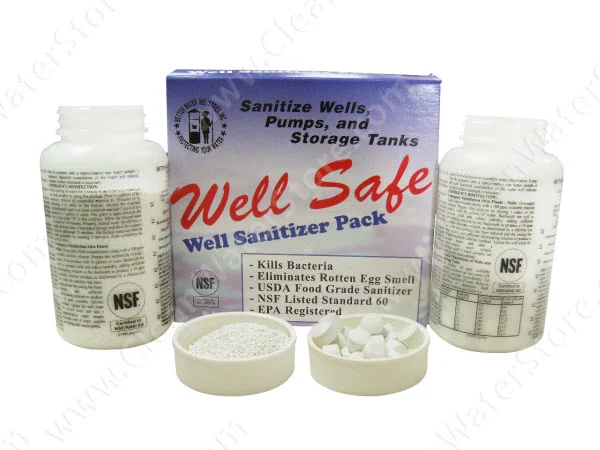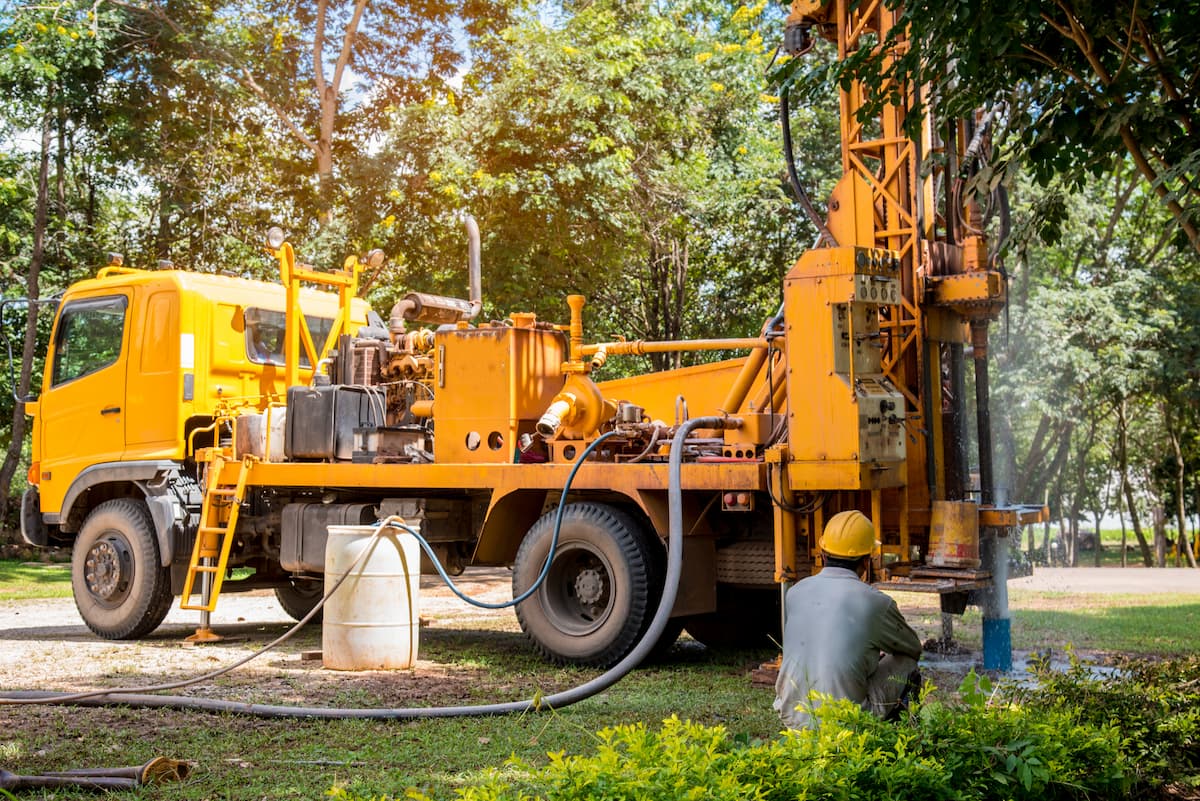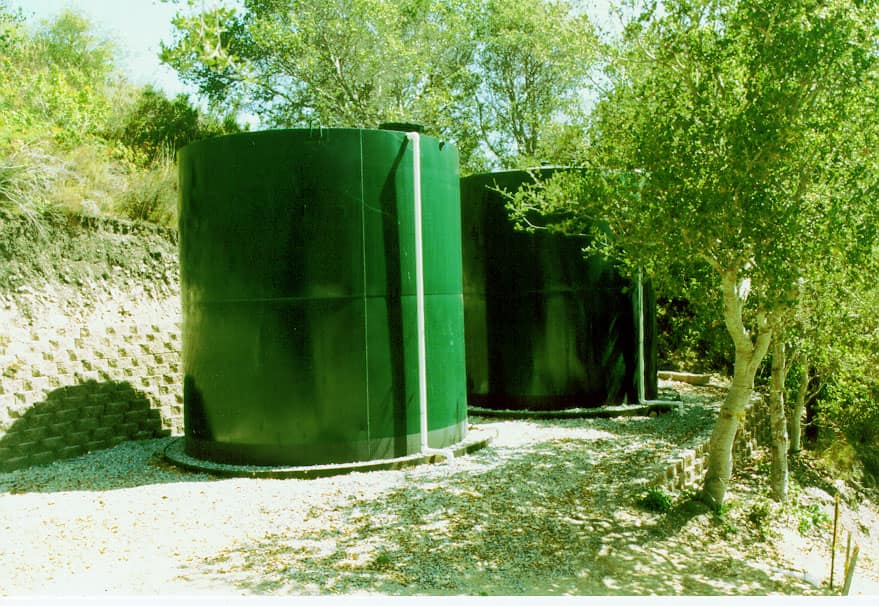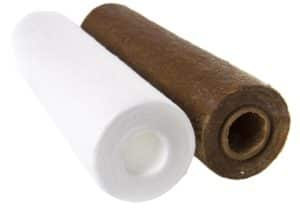How to Remove Iron Manganese And Odor From Well Water, Part 2
This article is the second in a series on “How To Remove Iron Manganese And Odor From Well Water”. You can review the first part, Step 1 here.
In this section, learn what to test your well water for, and how to do a quick physical inspection.
Do A Quick Inspection and Test Your Well Water
How to remove iron manganese and odor from well water? The first step is to determine the source and find out the basic water chemistry.
Usually, the source of the iron is from the well water itself, as iron naturally occurs in many ground waters. In some cases, however, the staining may be caused by old iron plumbing which has been corroded, making the water rusty.
The best way to find out is to do a water test of the water right from the well before it enters the house. If this is not possible, then run the water for 5 to 10 minutes so you know the water is coming right from the well.
A water test is important to know which type of iron filter to use and if your water is acidic or not. A water test will tell you how much iron you have, which helps in choosing the type of approach or system you should use to treat it.
Tests should include alkalinity, hardness, hydrogen sulfide, iron, manganese, pH, and total dissolved solids. If the water has a tea color to it or has a yellowish-clear color to it, then a tannin test is recommended as well.
It should always include a pH test, which indicates if the water is acidic or alkaline. The ideal pH for iron filters to work properly is between 7.0 and 8.0, which is considered neutral and not acidic.
For health-related concerns include a test for total coliform, E-coli (fecal coliform), and nitrate. If infants and children will be drinking the water, a complete mineral, metals, and bacteriological test from a State-certified laboratory is recommended.
If the source of water is a public water system and you experience iron-related problems, it is important to contact a utility official to determine whether the red water is from the public system or from the home’s plumbing or piping.
Check For Odors in Well Water & Water Heater
Run a hose bib or tap as close to the well as possible and fill a 5-gallon bucket or other container and notice if there are odors. If you smell a “rotten egg” odor, this is hydrogen sulfide gas. If water smells like oil or asphalt this can be from manganese. If the water smells like cucumber or sewage this is usually a result of iron and/or sulfur bacteria.
Run the water hot water from each tap and notice if there is an odor in the
hot water, that is not in the cold water. This indicates a problem with the water heater. Iron and sulfur bacteria can interact with the anode rod in water heaters, resulting in hydrogen sulfide gas only in hot water.
Perform a “Toilet Tank Inspection”
Unless your toilet tank is new or has recently been cleaned your toilet flush tank can be a wealth of useful water quality information! Simply lift the cover and look in. If you see slimy rusty deposits on the sides of the tank and frothy bubbles in the tank water, this is a good indication of iron bacteria.
Odor Identification and Solutions
Does the cold well water have an odor right out of the well, from an outside hose bib?
If there is an odor to the water, do all the taps in the home have the odor? Are some taps in the house (such as upstairs, or from a particular bathroom or fixture) have greater odor than others?
Does the hot water have the odor only, with the cold water having no odor?
The best way to test odor is to use a tall drinking water glass or wine glass and have at least two people perform the test by drawing the water and noting the odor.
How would you characterize the odor?
| Odors | Source | Possible Remedy |
| Asphalt or oily odor | Manganese | Iron filter that removes manganese ( Pro-OX, MangOX, Greensand, Pyrolox) |
| Oily odor | Petroleum | Oil removal media such OilSorb, followed by activated carbon filtration. |
| Cucumber odor | Iron or sulfate-reducing bacteria | Disinfection with chlorine or ozone or peroxide, followed by filtration |
| Earthy or grass odor | Geosmin | Produced by actinomycetes, blue-green algae, and green algae. |
| Garlic odor or taste | Methane gas | Off-gas into an open storage tank, ventilate well, and use caution in treating this problem; methane is flammable |
| Metallic odor | Iron, manganese, or copper | Determine the cause by testing the water |
| Pond or Algae odors | Bacteria, organic matter | Disinfection with chlorine or ozone, followed by filtration |
| “Rotten egg” odor | Hydrogen sulfide gas | Chlorination, aeration, ozone injection, hydrogen peroxide, followed by filtration |
| Sulfur bacteria | Chlorination, aeration, ozone injection, hydrogen peroxide, followed by filtration | |
| Sewage odor | Leaking septic tank | Repair or re-locate septic tank or well |
| Bacteria | Disinfection with chlorine or ozone or peroxide, followed by filtration; or repair or relocate septic tank or well |
Pressure Tank with Submersible Well Pump
The submersible pump in well (1) is controlled by the pressure switch (7). When pressure in a pressure tank (4) drops below a preset level (typically 40 to 60 PSI) the pressure switch turns on well pump.
The well pump continues to run until the pressure in the pressure tank builds up, and the pressure switch reaches the maximum pressure setting. The pressure tank contains a pre-charged air bag to moderate pressure in the piping system.
Check for Pipe Corrosion & Scale Build-up
Sulfur odors can cause sulfuric acid to build up in water and corrode piping and fixtures. Unless your home is new, it is important to check for pipe corrosion scale build-up in the piping. Fortunately, this is not difficult to do by using one of the following methods:
Check for signs of blue stains in fixtures, blue stains in toilet tanks, which can indicate copper corrosion, and/or test water for copper.
If you have galvanized iron pipe, look for signs of rust and rust-colored scale in the toilet flush tank.
If possible, inspect the exterior of pipes and valves, to see if you see any signs of pinhole leaks or corrosion by-products which can be crusty, bluish, white or salty looking, or rusty. If you are having any plumbing work done on your house, inspect any sections of the pipes that have been cut to see if there is any scale build-up or signs of corrosion.
Identify Pipe Sizes
It is useful to know the size of your incoming pipes. For instance, say you decide you want to install an iron filter system for your house. They come in different pipe sizes, such as ¾” pipe, 1″ pipe, etc. Generally, you want to make certain you get a system that will not restrict the water flow or pressure, so if you have a 1″ pipe, you would want an iron filter that has 1″ pipe connectors. Knowing what size piping you have solves this problem.
It is easy to check the size of your pipes. First, check on the pipe itself, often it will be labeled or written on the side. If not, the string method which measures the circumference is probably the best way to determine your pipe size. Circumference is the distance it takes to go around the pipe once.
Using a piece of string about 6″ long (or a cloth tape measure) wrap the string around the pipe once and measure to the nearest 1/8 of an inch. Once you have found the circumference, use the chart below to find your pipe or tube size.
Learning how to remove iron manganese and odor from well water is not difficult if you follow a few simple steps!
The 3rd and last part of this 3 – part series talks about what types of systems work best and more detail on how to remove iron manganese and odor from well water.














